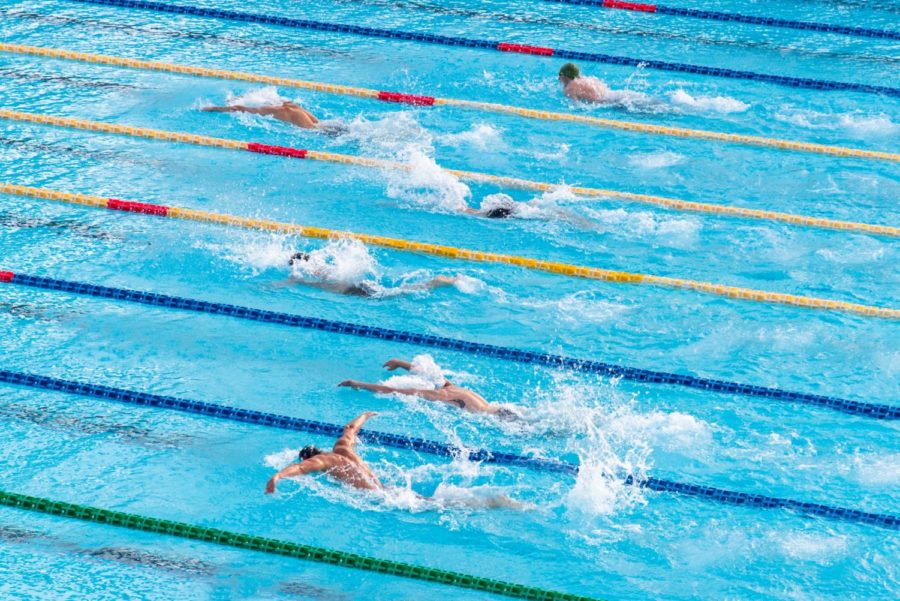To swim or not to swim?
The advantages and disadvantages of the infamous high school swimming unit
Most people agree that swimming is an important skill for students to learn, but the balance between the importance of learning to swim and discomfort with the circumstances of the infamous swimming unit is a topic continuously up for debate. At school, students typically participate in swimming units in their freshman and sophomore years (with the exception of some COVID-19 delays). Swimming units teach students basic swimming skills, first aid, and, in general, are supposed to be fun. Unfortunately, some students are unable to enjoy swimming for a variety of reasons.
For students who do not know how to swim and would not otherwise be learning, a swimming unit in elementary, middle, and high school is extremely beneficial. A study conducted by the Red Cross found that 54 percent of Americans either cannot swim or do not have basic swimming skills. Drowning is a serious issue in the United States. In 2019, 756 children and teens drowned. Drowning is preventable when people learn to swim at a young age, which makes teaching swimming an essential tool to prevent these tragic deaths. From a skill-building standpoint, teaching students to swim in school seems like a complete win. But, per usual, the issue is not that simple.
For students who already know how to swim, other issues—such as anxiety surrounding swimsuits—may take precedence. The swimming unit is uncomfortable for students because they have to wear a swimsuit, which is often exposing. W-L students may buy a one-piece exclusively for the swimming unit, feeling uncomfortable in the typical bikini. For students who are self-conscious about their bodies, the swimming unit can seem, at worst, like an opportunity for critique and humiliation by classmates. In a submission to Slate’s parenting advice column, a concerned parent asks if “discomfort” is enough of a reason to let her daughter sit out of her swimming unit at a new school. The parent cites discomfort with changing in the locker room and wearing a bathing suit in front of her classmates, especially after spending months in a pandemic, as reasons she did not want to attend the class. The initial response from the advice column was simple: “Your poor kid.”
This case is a prime example of when the cost of swim unit may outweigh the benefits. The student, in this case, already knew how to swim. So that presents the questions: Is swimming unit worth it for students who already know how to swim and have body image issues? And is it fair for students who do not know how to swim to be singled out if other students are allowed to opt out?
Answering these questions is difficult. But on a case-by-case basis, it is much simpler. Someone in this case might benefit from doing another activity during this time, such as lifting weights, zumba, or other physical activities, as suggested by Slate’s parenting advice column. For example, Arlington Public Schools (APS) allows students accommodations during swim unit such as swimming alone wearing whatever they want, including full body suits, during the unit.
Although this issue is extremely important, it does not necessarily have to be addressed by the administration with an announcement. In general, educators and parents having a more open mind and being more willing to accommodate students’ emotional needs might partially, if not totally, solve the issue of students’ discomfort in these classes. But, if adults in the position to make these decisions decide to ignore these students’ needs, the swimming unit will definitely not be beneficial.
The monetary cost is another one to consider. In a place like Arlington where, according to Payscale, the cost of living is 44% higher than the national average, the cost of a swimsuit seems trivial. However, the cost of buying a bathing suit can be a high expense to poorer students.
Although the argument can be made that students should be forced to do the swimming unit, I think that pushing students out of their comfort zone in this way defeats the ultimate purpose of the swimming unit: to benefit students and teach them basic life skills.













